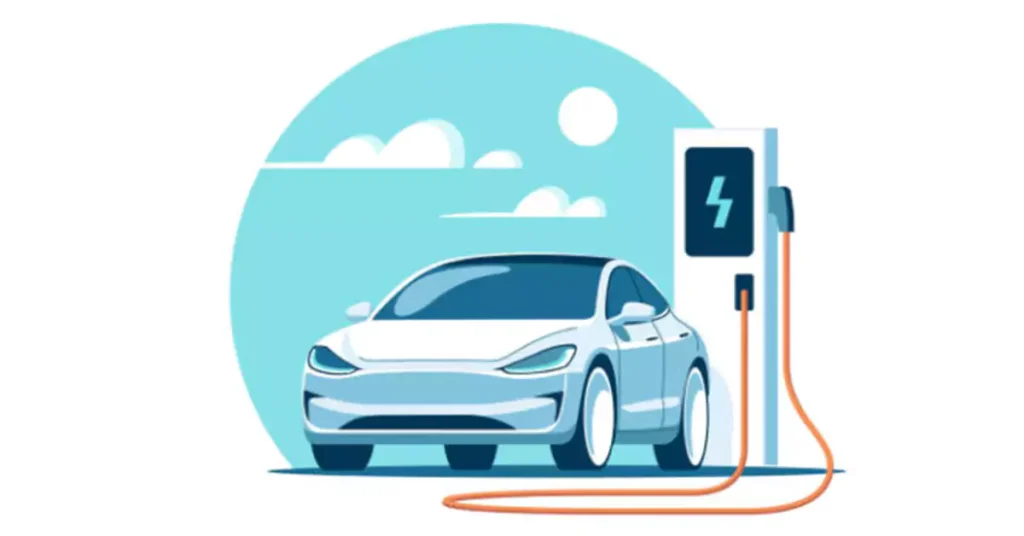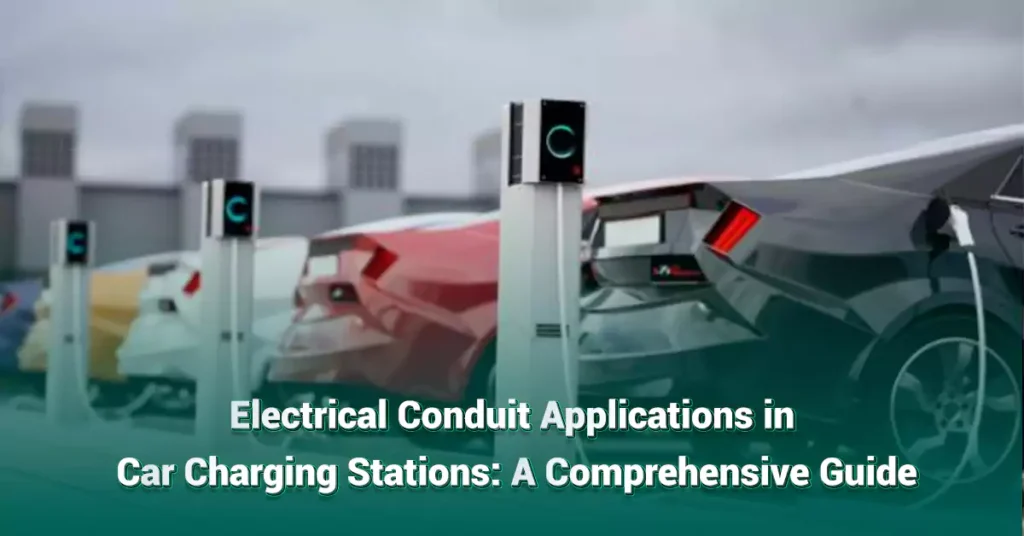
Inhaltsverzeichnis
As the world shifts toward electric vehicles (EVs), the demand for efficient, safe, and reliable EV charging infrastructure has grown exponentially. One crucial element of this infrastructure is the electrical conduit system, which protects the wires that carry power to charging stations. EV charging stations, especially those handling high-voltage and high-current demands, require conduit systems capable of withstanding harsh environments, preventing electrical hazards, and maintaining operational efficiency. This article explores the types of conduits used in EV charging stations, the specific requirements for these systems, and best practices for installation.
EV charging stations are locations where electric vehicles can recharge their batteries by drawing power from the grid. These stations are a vital component of EV infrastructure and come in various levels, depending on the speed and power capacity they offer. Understanding these levels helps illustrate why proper conduit selection and installation are critical.
Level 1 Charger
- Voltage/Power: 120 volts AC (common in household outlets).
- Charging Speed: Adds 3-5 miles of range per hour.
- Best For: Residential use or overnight charging.
Level 2 Charger
- Voltage/Power: 240 volts AC.
- Charging Speed: Adds 10-60 miles of range per hour.
- Best For: Homes, businesses, and public stations needing faster charging.
Level 3 Charger (DC Fast Charger)
- Voltage/Power: 480 volts DC or higher.
- Charging Speed: Can charge 80% of a vehicle’s battery in 30 minutes.
- Best For: Public stations in commercial or highway locations where quick charging is essential.
Each charging level has different voltage and current requirements, making it vital to use appropriate electrical conduit systems for safe and efficient power delivery.
Electrical conduits serve as protective pathways for the wires that transfer power from the electrical grid to the EV charging station. Various types of conduits can be used, each with specific applications based on installation environments, voltage levels, and safety considerations. The most common types of conduits used in EV charging stations include:
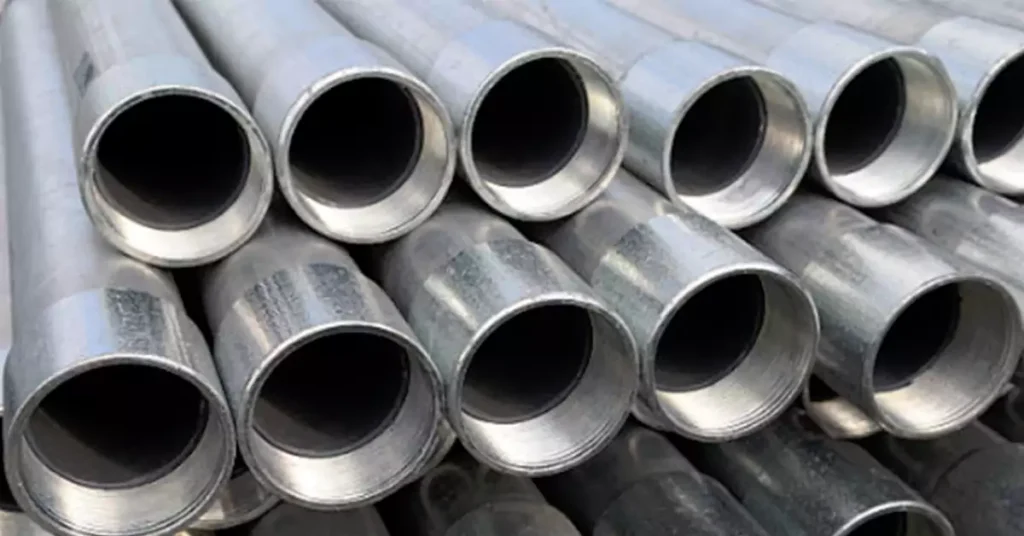
Best For: Outdoor and underground installations where high durability is required.
Benefits: Offers superior protection against physical damage and corrosion, and can serve as a grounding path.
Application: RMC is ideal for high-voltage installations (such as Level 3 chargers), as it can withstand significant environmental stresses.
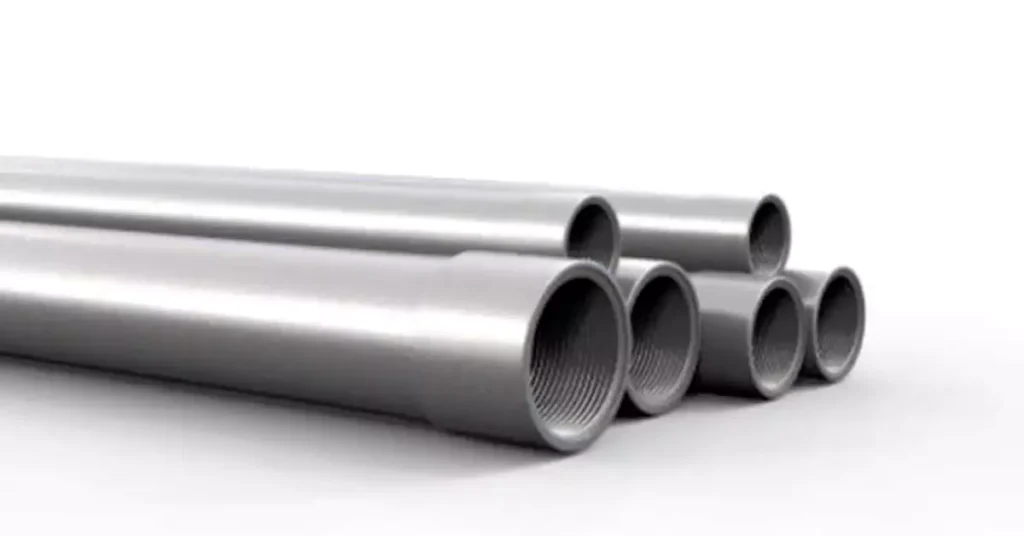
Best For: Outdoor and commercial environments.
Benefits: Lighter than RMC but still provides excellent durability and strength.
Application: Often used in commercial EV charging stations where the conduit is exposed to both physical impact and environmental factors.
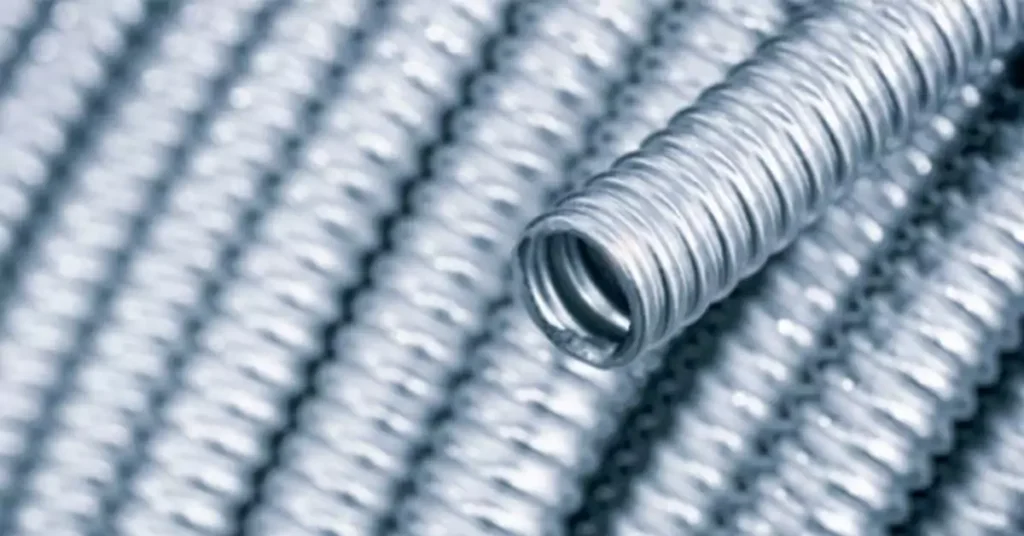
Best For: Indoor installations or environments with minimal physical damage risks.
Benefits: Lightweight and easy to install, making it cost-effective.
Application: EMT is commonly used in parking garages or indoor EV charging stations where high physical protection is less of a concern.
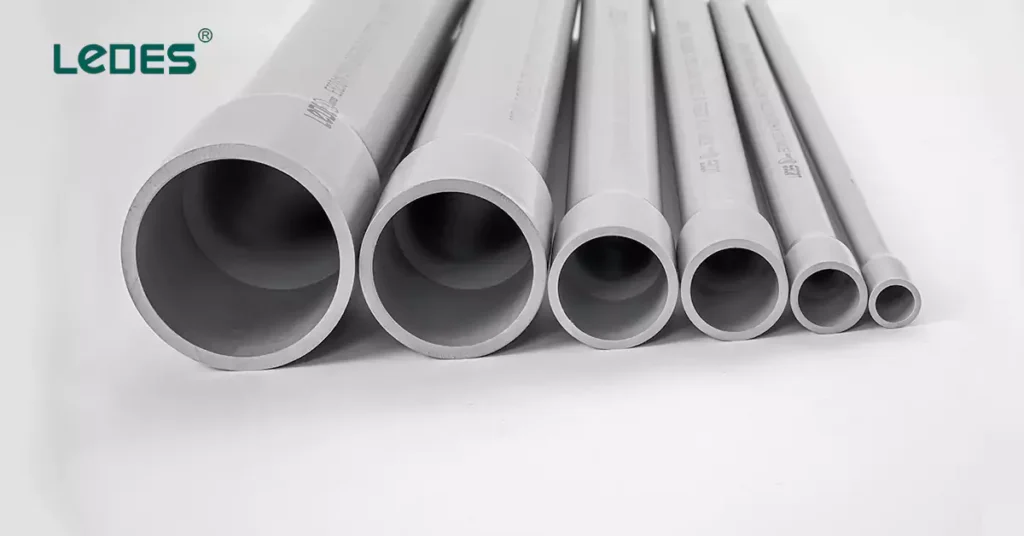
Best For: Outdoor and underground installations with less risk of physical damage.
Benefits: Resistant to moisture and UV rays, making it excellent for outdoor applications, especially in wet or corrosive environments.
Anwendung: Zeitplan 80-Leitung Und Zeitplan 40 Leitung are preferred for underground installations due to its thicker walls and higher resistance to impact.
4 Types of Electrical Conduits for EV Charging Stations (Pros and Cons)
Conduit Types | Strengths | Weaknesses | Best Use |
RMC | Excellent durability, fire-resistant, provides grounding | Expensive, heavy, difficult to install | High-voltage commercial stations |
IMC | Lighter and easier to install than RMC, Durable, corrosion resistant | Heavier than EMT, More expensive than EMT and PVC | Outdoor and commercial environments |
EMT | Lightweight, affordable, easy to install | Less durable, not suited for outdoor/wet locations | Indoor installations |
aus PVC | Corrosion-resistant, moisture-resistant, affordable | Vulnerable to physical damage | Residential or underground installations |
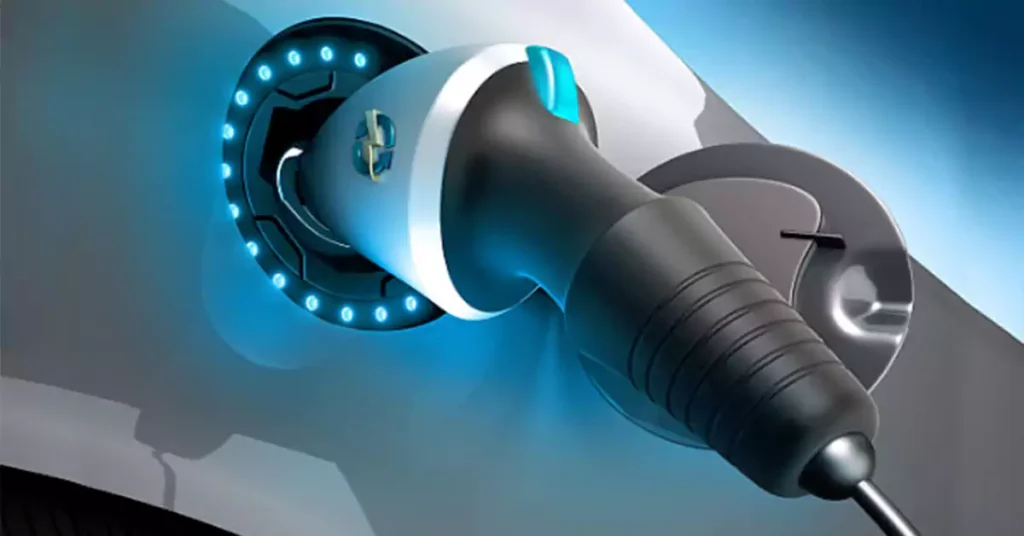
Given the high voltages and current requirements of EV charging stations, selecting the appropriate conduit is essential. Several factors must be taken into account when choosing the conduit for these installations:
EV charging stations, particularly those handling Level 2 or Level 3 charging, operate at higher voltages and currents than typical household installations. The conduits used must be able to safely handle these electrical loads without overheating or degrading over time.
Higher current generates more heat, especially in Level 2 and Level 3 chargers. Proper heat dissipation is vital to prevent overheating and potential fires. Metal conduits like RMC and IMC are preferred for their heat-conducting properties. Fire-resistant conduits further enhance the safety of EV charging systems, especially in confined or high-traffic areas.
Outdoor EV charging stations face exposure to a wide range of environmental conditions, including UV radiation, moisture, temperature extremes, and physical damage. PVC conduits, particularly those rated for UV resistance, are commonly used for outdoor applications. However, in high-traffic areas or locations subject to potential impact, RMC or IMC is often the better choice due to their superior durability.
Many EV charging installations require conduits to be placed underground. In these cases, the conduit must be able to withstand soil pressure, moisture, and chemical exposure. Schedule 80 PVC and RMC are commonly used for underground installations due to their strength and moisture resistance.
For installations where flexibility is required, such as tight spaces or areas with significant movement (e.g., near the charging equipment), LFNC is often the preferred choice. It offers flexibility while maintaining protection from moisture and corrosion.
EV charging stations can be installed in both residential and commercial environments, but the conduit requirements for each differ significantly.
Most residential charging stations are designed for Level 1 or Level 2 chargers, which have lower voltage and current demands. As a result, the conduit requirements are less stringent than for commercial installations. PVC conduit is commonly used in residential setups due to its affordability, moisture resistance, and ease of installation. For underground installations, Schedule 80 PVC is recommended to provide additional protection from physical damage.
In most residential applications, conduit runs are relatively short, and the conduits themselves do not need to be as robust as those used in commercial installations. However, it is still essential to use UV-rated PVC conduit if the installation is exposed to sunlight.
Commercial EV charging stations, particularly those with Level 3 chargers, require more robust conduit systems to handle the higher power demands. RMC or IMC is typically used for commercial installations due to their superior durability, fire resistance, and ability to protect against physical damage. These conduits are also suitable for outdoor installations, where they may be exposed to weather conditions and high traffic.
In commercial setups, multiple charging units are often installed, requiring a complex conduit network that must be carefully planned and installed to ensure safety and efficiency. Commercial installations also require grounding and may need expansion couplings to account for temperature changes that cause the conduit to expand or contract.
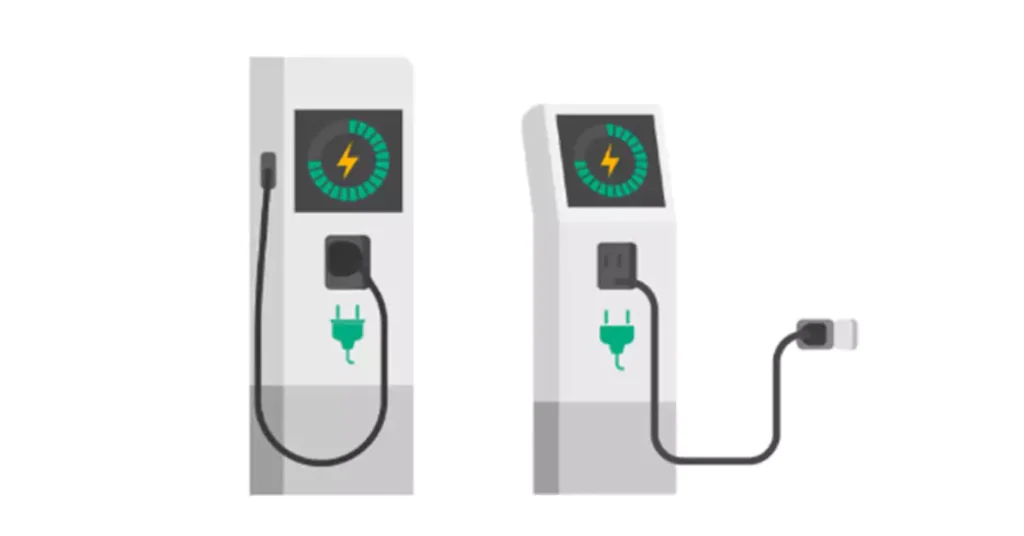
Level 2 chargers operate at 240V and typically require 30-40A circuits, making them a popular choice for home and workplace installations. Conduit solutions for Level 2 stations are relatively straightforward but must account for derating factors if multiple wires share a conduit.
Conduit Material: PVC conduits are often suitable for Level 2 installations, especially for residential settings where corrosion resistance and ease of installation are key. For commercial settings, EMT or RMC might be preferred for added durability.
Level 2 Charging Stations Requirements Data Sheet
Level 2 Charger Specs | Typical Circuit Amperage | Recommended Conduit |
240V, 40A | 40A | 1-inch PVC (Schedule 40) |
240V, 60A | 60A | 1 ½-inch EMT |
DC Fast Chargers operate at much higher voltages and currents (typically 400-800V and 100-400A), necessitating larger conduit sizes and robust protection. These stations are often installed in commercial or public areas where heavy-duty materials like RMC or schedule 80 PVC are required to handle higher electrical loads and provide protection from physical damage.
Conduit Size: Due to the increased current, fast charger installations often require large conduit sizes (e.g., 2-inch or larger), particularly when running multiple wires in the same conduit.
Heat Dissipation: Larger conduits help dissipate heat, reducing the risk of conductor overheating. NEC derating factors become especially important in fast charger installations, where multiple large conductors are present in a single conduit.
DC Fast Charging Stations Conduit Demands Data Sheet
DC Fast Charger Specs | Typical Circuit Amperage | Recommended Conduit |
480V, 100A | 100A | 2-inch RMC |
800V, 200A | 200A | 2 ½-inch Schedule 80 PVC |
As EV technology advances, charging stations will need to accommodate higher voltages and currents. Installing larger conduits during initial construction can save costs and future-proof installations for ultra-fast chargers (above 350 kW), which will require even larger wiring and conduit sizes.
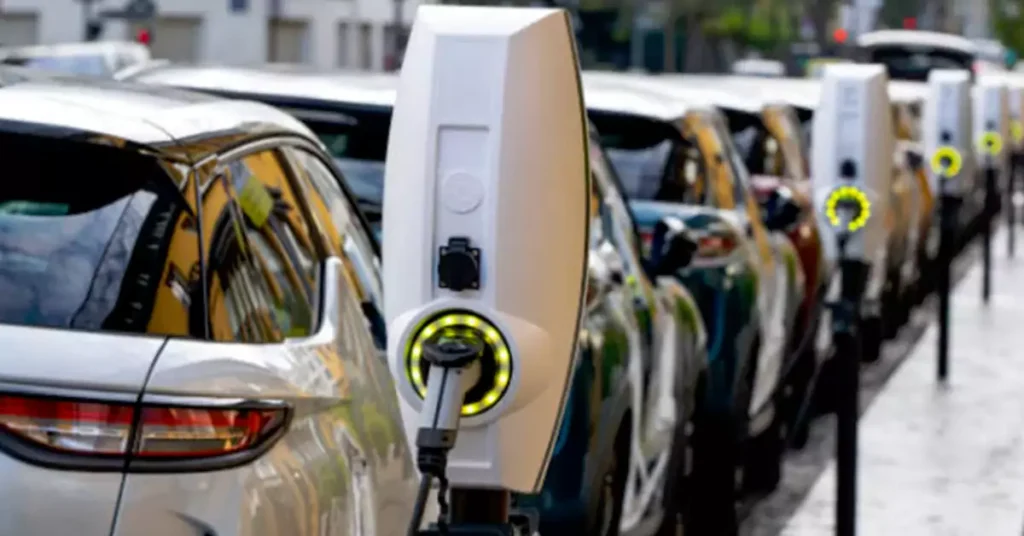
EV charging stations function by transferring electricity from the grid to an electric vehicle’s battery through a charging connector. The process is similar to refueling a gasoline vehicle, but instead of filling up with liquid fuel, the car is charged with electrical energy. Here’s an overview of how these stations operate:
The charging station is connected to a local power grid or renewable energy source, like solar panels. These stations have a charging port where drivers plug in their vehicles. Depending on the type of charger—Level 1, Level 2, or DC fast chargers—the station draws electricity at different rates from the power grid to charge the vehicle.
Most electric grids provide alternating current (AC) power. For Level 1 and Level 2 chargers, the vehicle’s onboard charger converts this AC into direct current (DC), which charges the battery. However, DC fast chargers (Level 3) skip the onboard charger, converting AC to DC directly at the charging station and supplying the battery with DC power for quicker charging.
The charging station communicates with the electric vehicle to ensure a safe and optimal charging process. The system exchanges information on the vehicle’s current battery charge and adjusts the power flow accordingly. Safety protocols, such as automatic shutoff when the battery is full, protect the car and its battery from overcharging or malfunction.
Once connected, the station begins charging the battery. The time it takes depends on the charger type: Level 1 chargers might take 8–12 hours, Level 2 chargers 3–8 hours, and DC fast chargers can provide an 80% charge in around 30–60 minutes. The station continuously monitors the charge, adjusting the flow of electricity to optimize battery health and prevent overheating.
Some EV charging stations are equipped with energy management systems that allow the distribution of electricity during peak demand times or balance power consumption across multiple charging units. This is especially relevant in commercial or public charging stations, where multiple vehicles are charging simultaneously.
Electrical conduit plays a crucial role in safely housing and protecting the high-voltage cables that connect the charging station to the grid. Conduits, such as PVC or RMC, shield the wiring from environmental factors like moisture, UV radiation, and physical damage. These protective tubes ensure the long-term functionality and safety of the electrical infrastructure, making them a vital part of the entire charging system.
Installing conduit for EV charging stations requires careful planning and attention to detail to ensure that the system operates safely and efficiently. Below is a step-by-step guide to the conduit installation process:
Tipps: You can learn more about the Installationsanleitung für elektrische Leitungen in building in our last post.
Before beginning the installation, it is essential to plan the layout of the conduit runs. Identify the location of the power source and the charging unit, and map out the shortest and most direct route for the conduit. Avoid sharp bends and minimize the length of the conduit run to reduce the risk of voltage drop and overheating.
Based on the installation environment and power requirements, choose the appropriate type of conduit. For outdoor or underground installations, PVC or RMC is typically the best choice, while EMT is suitable for indoor installations. Ensure that all conduit meets the relevant safety standards, such as UL ratings for fire resistance.
Begin installing the conduit from the power source, securing it at regular intervals according to local electrical codes. For outdoor installations, use expansion couplings to allow for thermal expansion and contraction. If the conduit is being installed underground, ensure that it is buried at the appropriate depth (typically 18 to 24 inches for residential installations).
After the conduit is installed, pull the electrical wires through the conduit using a fish tape. Be sure to use wires that are rated for the voltage and current of the EV charging station. Avoid overfilling the conduit to prevent overheating.
Once the wires are in place, test the installation to ensure that there are no faults in the system. Check for continuity, grounding, and insulation resistance to ensure that the system is safe and functioning correctly.
After the conduit and wiring are installed and tested, mount the charging unit according to the manufacturer’s specifications. Ensure that the conduit is securely fastened to the unit and that all connections are tight and properly sealed.
Installing electrical conduit in EV charging stations requires careful planning and execution. Below are some best practices to ensure safe and efficient conduit installations:
EV charging stations must comply with local and national electrical codes, such as the National Electrical Code (NEC). These codes dictate the types of conduit that can be used, the correct installation procedures, and the electrical load capacities for safe operation.
Tipps: You can learn more about global standards for EV charging station from our last post.
Excessive bends or long conduit runs make it difficult to pull wires through, increasing the risk of damaging the wires. NEC guidelines recommend no more than four 90-degree bends in a single conduit run. Longer runs require additional pull boxes to avoid stressing the wires.
In outdoor or underground installations, watertight fittings and expansion couplings are essential. Expansion couplings are necessary for installations where the conduit will experience thermal expansion and contraction, preventing conduit breakage or separation over time.
For metal conduit systems, the conduit itself can act as a grounding path, adding an extra layer of protection in case of electrical faults. Proper grounding of the conduit system is critical for overall safety, particularly in high-voltage installations.
In high-traffic areas or locations with heavy equipment, installing conduits in protected or concealed spaces can prevent physical damage. Rigid Metal Conduit (RMC) offers superior protection against physical impact and should be used in such environments.
The electrical conduit system is a critical component of any EV charging station, providing protection for the high-voltage cables that power the charging units. Selecting the right conduit materials and ensuring proper installation techniques are essential to maintaining the safety, efficiency, and longevity of the system. Whether you’re installing a residential Level 1 charger or a commercial DC fast charger, understanding the role of conduit in EV charging stations will help ensure a successful and safe installation.


